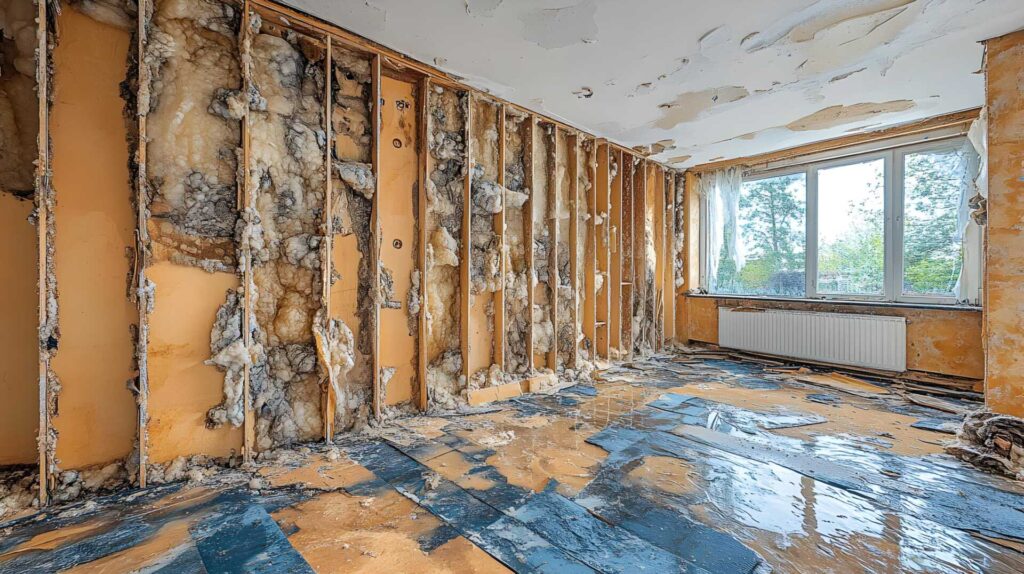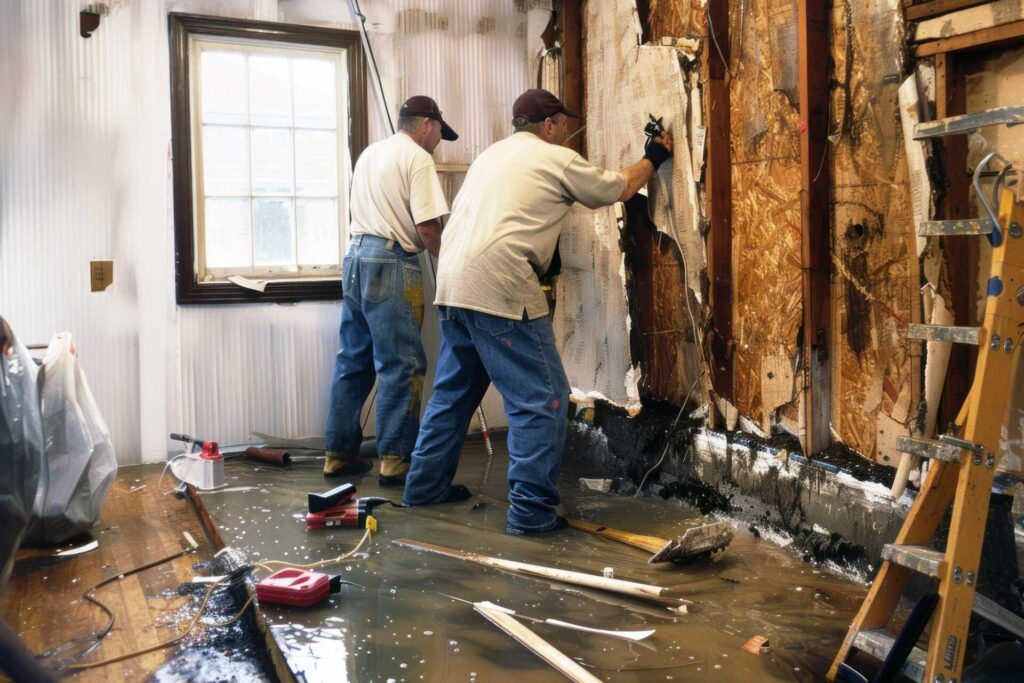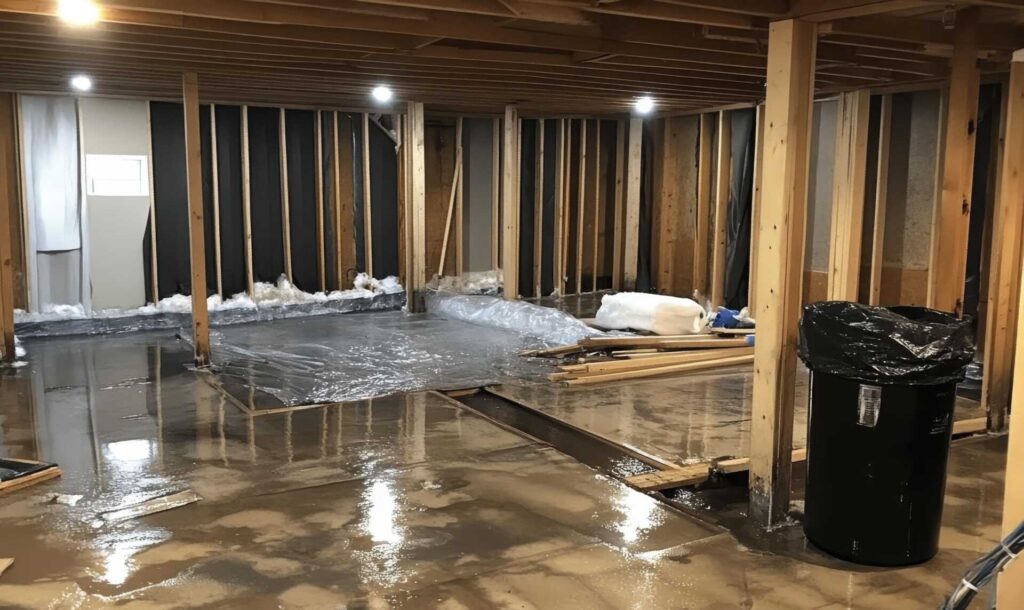Contents
Addressing mold issues promptly is important when it comes to ensuring the safety and well-being of your household. Understanding the key steps in effective mold remediation can safeguard your home from potential health risks and structural damage. From initial assessment to preventive measures, each stage plays a crucial role in creating a mold-free environment. Stay tuned to discover practical tips and expert insights that will enable you to safeguard your residential space proactively.
Importance of Mold Remediation
Mold remediation is crucial for maintaining a healthy living environment in residential spaces. Mold can thrive in damp or humid areas of your home, such as bathrooms, basements, or areas affected by water leaks. This can lead to various health issues, including allergies, respiratory problems, and skin irritation. Mold spores can also spread rapidly, impacting the air you breathe and the surfaces in your home.
When left untreated, mold can weaken the structure of your home, causing damage to walls, ceilings, and floors. Additionally, mold growth can result in unpleasant odors that are challenging to eliminate without proper remediation. By addressing mold issues promptly, you can prevent further damage to your property and ensure a secure living environment for you and your family.
Professional mold remediation services can assist in identifying the source of the mold, assessing the extent of the problem, and safely removing it from your home. These experts have the expertise and tools to efficiently remediate mold, preventing its return and safeguarding the health and safety of your household.
Regular inspections and maintenance can also help prevent mold growth, maintaining your home in top condition for years.
Common Mold Types in Homes
In residential spaces, various types of mold commonly find favorable conditions for growth. Understanding the different mold types that can be found in homes is essential for effective remediation.
One common type is Cladosporium, which is typically green, brown, or black and can grow on fabrics, carpets, and upholstery.
Another prevalent mold is Penicillium, often blue or green, found on materials with water damage like wallpaper, insulation, and carpet.
Aspergillus is a mold commonly present indoors, appearing powdery and ranging in color. It can cause respiratory issues in susceptible individuals.
Stachybotrys chartarum, also known as black mold, is a toxigenic mold that thrives in damp or water-damaged areas. This type of mold releases mycotoxins that can be harmful to human health.
Alternaria is another mold species found in homes, known for its fuzzy texture and dark green or brown color. It typically grows in damp areas like showers and under sinks.
Signs of Mold Infestation
Detecting signs of mold infestation in your home can be crucial for maintaining a healthy indoor environment. Mold growth can be harmful to both your health and the structural integrity of your home. Here are three key signs to look out for:
Visible Mold: One of the most apparent signs of a mold infestation is seeing mold growth in your home. Mold can appear in various colors, including black, green, or white, and often looks fuzzy or slimy. Check areas prone to moisture, such as bathrooms, basements, and kitchens, for any visible mold growth on walls, ceilings, or surfaces.
Musty Odor: Mold often produces a distinct musty smell that can be a strong indicator of its presence even if you can’t see it. If you notice a persistent musty odor in certain areas of your home, it’s crucial to investigate further for possible mold growth. Pay attention to areas with poor ventilation or past water damage.
Water Damage: Any past water damage, such as leaks, flooding, or burst pipes, can create an environment conducive to mold growth. If your home has experienced water-related issues, keep an eye out for signs of mold infestation in those specific areas. Mold can start growing within 24-48 hours after water exposure.
Being aware of these signs can help you detect mold infestations early, allowing for prompt remediation and a healthier living environment.
Steps to Proper Mold Removal
To effectively tackle mold removal in residential spaces, it’s important to follow a systematic approach that prioritizes safety and thoroughness. The first step is to assess the extent of the mold infestation. Identify areas affected by mold growth and determine the type of mold present.
Next, optimize proper ventilation by opening windows and using fans to reduce the spread of spores.
Once you have assessed the situation, gather the necessary equipment for mold removal. This may include gloves, masks, goggles, scrub brushes, and mold-specific cleaning solutions. Begin by scrubbing surfaces with mold growth using the cleaning solution. For porous materials like drywall or carpeting that are extensively affected, it may be best to discard and replace them.
After cleaning visible mold, it’s important to address moisture sources to prevent regrowth. Fix any leaks, improve ventilation, and reduce humidity levels in the affected areas. Consider using dehumidifiers to maintain optimal humidity levels.
Lastly, the proper disposal of materials contaminated with mold should be optimized. Seal them in plastic bags before removal to prevent the spread of spores. Thoroughly clean the area post-remediation to remove any remaining mold particles.
Following these steps diligently will help you effectively remove mold from your residential space and create a safer, healthier environment.
DIY Vs. Professional Remediation
When considering mold remediation for residential spaces, one crucial decision to make is whether to tackle the removal process yourself or hire professional remediation services. Both options have their pros and cons, so it’s vital to weigh them carefully before making a decision.
DIY Mold Remediation
- Cost-Effective: Doing it yourself can save money on labor costs, especially for smaller mold infestations.
- Control Over Process: You have direct control over the remediation process, making sure it aligns with your preferences.
- Immediate Action: DIY allows for immediate action when you discover mold, halting it from spreading further.
Professional Mold Remediation
- Expertise and Experience: Professionals have the knowledge and tools to manage mold infestations of any size effectively.
- Thorough Inspection: They can conduct a comprehensive inspection to identify hidden mold and moisture sources.
- Safety Assurance: Professionals adhere to industry standards to ensure safe and complete mold removal, reducing health risks.
Ultimately, the decision between DIY and professional mold remediation depends on factors like the extent of the infestation, your budget, and your comfort level with handling the process.
For extensive mold problems or if you’re unsure about the proper remediation techniques, hiring professionals may offer peace of mind and ensure a thorough and effective removal process.
Preventing Future Mold Growth
Moving forward from considering DIY vs. professional mold remediation, it’s essential to focus on preventing future mold growth in your residential spaces. To safeguard your home against mold, promptly address any moisture issues. Assure proper ventilation in high-humidity areas like bathrooms and kitchens. Use exhaust fans or open windows to reduce humidity levels. Repair any leaks in pipes, roofs, or windows to prevent water intrusion. Regularly inspect your home for any signs of moisture accumulation, especially in basements and attics.
Another key preventive measure is maintaining indoor humidity levels below 60%. Consider using a dehumidifier if necessary, particularly in damp areas. Keep an eye on condensation on windows or walls, as it can indicate high humidity levels. Additionally, regularly clean and inspect your HVAC system to prevent mold growth in ducts and vents.
Furthermore, proper insulation is vital to prevent condensation and subsequent mold growth. Assure your home is well-insulated to prevent warm, moist air from coming into contact with cold surfaces.
Regularly clean and maintain gutters to prevent water from seeping into your home’s foundation.
Incorporating these preventive measures into your home maintenance routine can significantly reduce the risk of future mold growth. Stay vigilant and address any moisture issues promptly to create a healthy living environment for you and your family.
Hiring Certified Remediation Experts
For the best resolution of mold issues in your residential spaces, engaging certified remediation experts is essential. These professionals possess the expertise and tools necessary to effectively address mold problems and ensure a safe living environment for you and your family. Here are three reasons why hiring certified mold remediation experts is vital:
Expertise: Certified mold remediation experts have undergone rigorous training and certification processes that equip them with the knowledge and skills to identify, contain, and eliminate mold effectively. Their proficiency allows them to assess the extent of the mold infestation accurately and develop a personalized remediation plan customized to your specific needs.
Advanced Equipment: Remediation experts utilize specialized equipment such as HEPA vacuums, air purifiers, and dehumidifiers to eradicate mold spores and moisture from your home. These tools are essential for thorough mold removal and preventing future growth, ensuring a complete remediation process.
Compliance with Regulations: Certified mold remediation professionals are well-versed in industry standards and regulations governing mold remediation practices. By hiring experts who adhere to these standards, you can rest assured that the remediation process is conducted safely and effectively, following all necessary guidelines to protect your home and health.
Wrap-Up
By addressing mold infestations promptly and effectively, you can create a healthier living environment for you and your loved ones. As a skilled gardener tends to their plants to promote growth and vitality, proper mold remediation nurtures your home’s well-being. By removing mold and preventing its return, you can enjoy a safe and mold-free living space for years to come.




